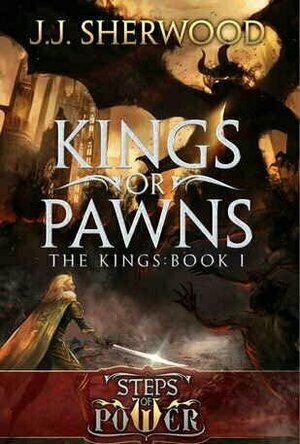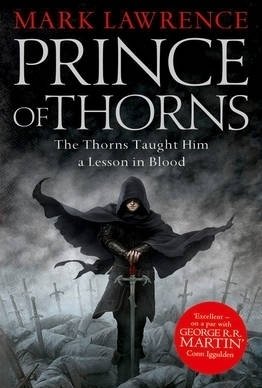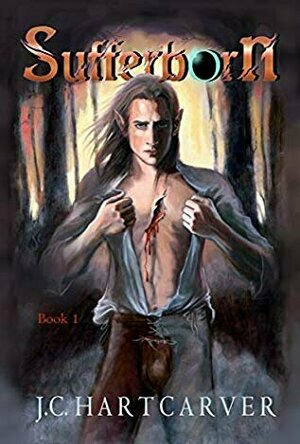
Crazy Snowboard Free
Games and Sports
App
>>> 28 new levels! 9 new dudes! 9 new boards! 8 new grabs!! <<< Download the #1 mobile snowboard...

Northern Lights Alert Levi
Weather and Travel
App
App works in Levi, Finland Get the Northern Lights -app and know exactly when the sky will be...
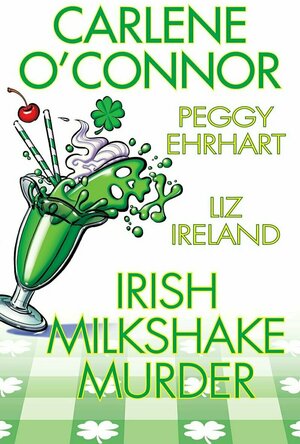
Irish Milkshake Murder
Carlene O'Connor, Liz Ireland and Peggy Ehrhart
Book
Raise a glass for St. Paddy’s Day but keep a shamrock handy because some of these minty milkshakes...
Rachel King (13 KP) rated Summers at Castle Auburn in Books
Feb 11, 2019
I grew to love Coriel as her story progressed and she matured into a strong, independent young woman. I love that she is not just a pretty face, but possesses both intelligence and wit. In many ways, this book is her coming-of-age story with a fantasy background that could have easily been traded for some other setting without compromising the character of Coriel Halsing.
I also love that Coriel is not the center of royal attention - like her sister, Elisandra - and the "handsome prince" is neither meant for her nor remotely appealing to me, the reader. It was quite entertaining for me to be constantly guessing as to whom Coriel would eventually wind up with. When the man was finally revealed, I was very happy with the results, though I would have enjoyed a bit more wooing on his part.
All of the different characters are well-developed and unique, from the narcissistic handsome prince Bryan, to the always-composed Elisandra, to the many aliora that populate the book. The aliora are quite fascinating, comparable to fairies or elves in description, but still unique to Sharon Shinn's design. In many ways, the aliora act as catalysts for political intrigue within Castle Auburn, as well as Coriel's personal development and maturation.
As an adult fairy-tale, this book can easily appeal to both teens and adults, as the romance is tastefully done and the risque topics, such as slavery, suicide, and illigitimacy, are handled with care and respect. Personally, I loved this book as much as I have loved everything else I have read from Sharon Shinn.
Merissa (13555 KP) rated Claimed by a Demon King (Eternal Mates, #2) in Books
Dec 17, 2018
As the title says, this is book 2 in the Eternal Mates series and as such I recommend reading Kissed by a Dark Prince first, although this is not altogether necessary.
A lunar month has passed since the end of Book 1 and during that time Sable has been dreaming of King Thorne but keeps telling herself that she isn't interested. She is aiming to be Commander in Archangel and is determined to make the mission to help King Thorne a success - but only for career options, of course! Thorne has also been dreaming of Sable and knows that she is his fated female but is at a loss on how to proceed. During which time he is also trying to find a way to stop his kingdom from being overrun and how to improve his subjects' lives (if they survive the coming battle).
Felicity Heaton has written another fantastic series that you can lose yourself in. There are aspects of most characters that you can either relate to or admire... and trust me, I did a lot of admiring of Thorne! But with elves, werewolves, dragons and vampires there is someone there to interest everyone. And I just have to say that I love how the Vampire Erotique Theatre makes a show (another fantastic series if you haven't read it yet).
This book has everything from shapeshifters, vampires, demons (obviously) to war, battles, portals and angels. It is a book to immerse yourself in and not come up for air until you've finished it. Claimed by a Demon King is smoking hot and if Thorne is inexperienced, then all the angels in heaven won't be able to help Sable once he gets some experience under his belt! A perfect blend of innocence and pure, unadulterated male who has found his match in Sable. May the gods help Hell, because with this pair, anything is possible.
Highly recommended for all fans of Paranormal Romance and Felicity Heaton.
http://archaeolibrarianologist.blogspot.de/2014/02/claimed-by-demon-king-eternal-mates-2.html
Phil Leader (619 KP) rated Kings or Pawns (Steps of Power #1) in Books
Nov 18, 2019
But that is where any similarity between this book and most other epic fantasy novels ends. Sherwood tells the tale of an elven country that has become corrupt with a ruling council who make decisions for reasons of profit, driving the rightful kings away and installing a puppet regime. Meanwhile the country is facing a war led by a brilliant defector.
When his father, the king, dies young Prince Hairem is determined to stand up to the council and stop the rot. But the council has ruled for hundreds of years, how can he possibly change things? Meanwhile Jikun, the general of the army must obey the council's wishes, even if the orders will only lead to destruction.
Sherwood starts with a few scenes and set pieces and gradually introduces the key players; Jikun is bold and brilliant but has a lot of inner demons which threaten to destroy him. Hairem is idealistic but naive.
The machinations of the council are real House of Cards type stuff, every way that Hairem tries to exert his authority blunted and diverted by the wily council members, who simultaneously try to make out they are on his side. As a political thriller this works amazingly well despite being set in a fantasy world; the descriptions and characters are perfectly pitched. It seems that pretty much everybody has dark secrets which everybody else is either trying to discover or use to their advantage.
There are scenes of action too, with Jikun and the army and also Sellemar mounting a daring raid into enemy territory plus duels and assasination attempts. This book really does have everything packed into it and the ending is both shocking and perfectly balanced to allow for further books in the series while satisfyingly closing a number of plot threads.
I was expecting a fairly standard fantasy book when I started this; what I got was an absolute gem that just begged to be read. A total masterpiece.
Phil Leader (619 KP) rated Prince of Thorns in Books
Nov 25, 2019
As wider events across the kingdoms unfold, Jorg must face up to his past in order to survive the present, and make a future for himself and his band of Brothers.
In any other series of books, Jorg would be the villain of the piece. A prince of one of the hundred kingdoms, he is the leader of a violent gang despite being only a teenager. He demonstrates a complete lack of compassion and pursues his goals with a single minded ruthlessness that is unusual even by the standard of 'grimdark' fantasy fiction. But in Lawrence's very capable hands the reader will be rooting for him, despite his highly questionable motives, morals and actions.
The narrative follows two lines, the 'present' and the events of four years previously when Jorg first took up his life of robbery and violence, with other flashbacks into his deeper past, exploring just why he is the way he is.
The characterisation is superb, and the description of the fantasy world Jorg inhabits is spellbinding. As the odds he faces mount, Jorg simply becomes more cunning, more devious and more deadly. If he can't win within the rules that the world has set, he simply changes the rules to suit himself. There is also a terrific streak of black humour that runs throughout the book, which somewhat lifts the tone.
This does show a little as a first novel. The writing is maybe not as fluent as the subsequent works and sometimes the story wanders a little before getting back on track but, just like Jorg, it does what it sets out to do.
If you like your fantasy full of happy elves and heroes prepared to risk all for a noble cause this probably isn't the book for you. If you want to read about someone who will stop at nothing when he is pushed to the limit then this may well be what you are looking for.
Rating: Plenty of graphic violence and sexual references throughout
Merissa (13555 KP) rated Sufferborn in Books
Jan 27, 2020
The pacing of this book is overall very slow. There are moments when it picks up but then it slows down again. This is good in the majority of the cases as there is always a lot going on, so it gives you time to grasp the situation as well as learning more about the characters. I would say that personally I would have found chapter headings to be helpful, just so I could find out who was talking and when, but that's probably just me.
And there are a LOT of characters too! The main ones end up being Daghahen, Dorhen, and Kalea, but trust me when I say there is a whole caboodle of characters there that will draw your attention. In fact, even in the last few chapters, you are introduced to new characters to take into book two with you.
With the slow pace and the amount of characters, it comes as no surprise this is a long book, typical of Fantasy. I wouldn't call it a Fantasy Romance as I felt the romance between Dorhen and Kalea actually wasn't that important. I mean, obviously it is or Kalea wouldn't have gone looking for him, but on the whole, there is so much more to the story than "just" romance. I would call it Dark Fantasy as there is plenty of violence and the threat of rape and/or rape scenes.
It ends on a cliffhanger so fair warning and I haven't found anything online to say when the next book is available. If Dark Fantasy ticks your box then I would recommend it.
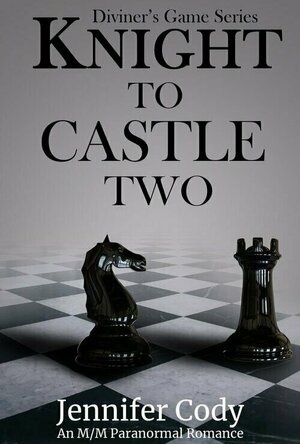
Knight to Castle Two (Diviner's Game #2)
Book
Loki: Surviving as a human in the world of Non-Humans means that every breath I’ve taken for...
MM Paranormal Romance Step-Brothers
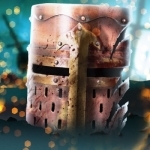
Heroes and Castles 2 Premium
Games and Entertainment
App
To your left, lumbering Giants smash into hordes of skeleton warriors. To your right, Knights cut...

